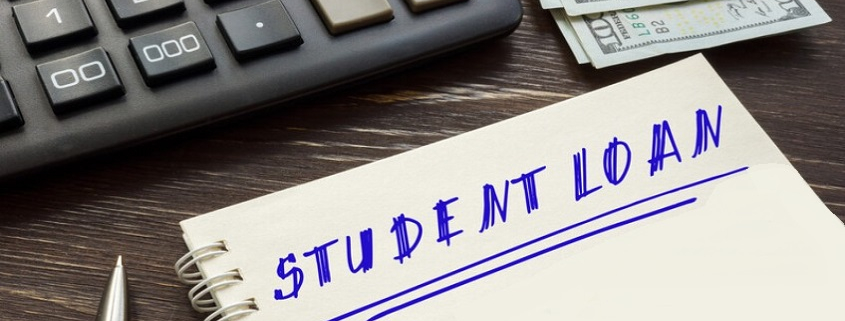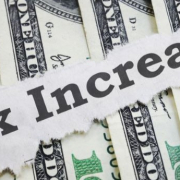How To Prepare For The Return Of Student Loan Payments
For years now, federal student loan payments have been on pause but that hiatus is about to come to an end.
The paymen pause began in March 2020, as part of the relief offered during the Covid-19 pandemic, and was repeatedly extended, allowing borrowers to keep money in their pockets instead of putting it toward student loan payments.
The agreement negotiated between President Biden and House Speaker Kevin McCarthy to raise the debt ceiling stipulates that student loan payments would resume around Sept. 1, The New York Times reported. Even without that provision in the debt ceiling deal, the payment pause was bound to come to an end sooner or later, as Biden had already announced he did not plan to extend it.
Borrowers likely will still have until the end of the summer to get their finances prepared for this new financial reality. Still, many people have gone three years without factoring student loan payments into their budgets, and the change could be jarring.
Update Your Information
It’s been long enough that you may have forgotten some essential details about your student loans. Not to mention, a number of loan servicers stopped working with the Department of Education during the payment pause, so your loan servicer may have changed.
“About a third of borrowers will be making payments through a different company than they were before the pandemic pause,” Money estimated.
So as the first order of business, figure out who your loan servicer is. If your loan servicer changed, you should have received notices you can check. Or go to StudentAid.gov, navigate to your account dashboard, and select “My Loan Servicers.” Another option is to call the Federal Student Aid Information Center at 1-800-433-3243.
It’s also smart to log into your account to make sure your contact information is up to date. This includes your email address, mailing address, and phone number.
While you’re there, see if there’s an upcoming due date listed for your next payment. Consider setting up autopay to make sure you pay on time, or creating a reminder for yourself.
“If you were on an automatic payment plan before the pandemic — that is, before March 13, 2020 — you must opt back in,” The New York Times warned. “Your servicer should reach out to you about this. If you don’t respond, your payments will not automatically restart.”
Reconfigure Your Monthly Budget
Adding student loan payments to your existing expenses might require some extra work and planning.
“Take some time to find a budget method that works for you, such as tracking your spending for a month, assigning each expense to a broad category,” The Wall Street Journal recommended.
Doing this can help you identify areas where you can cut back — perhaps even enough to cover some or all of your student loan payments.
After reviewing the numbers, if you realize you already have room in your budget, consider resuming payments sooner than later.
“This way, you can take advantage of 0% interest while it lasts,” said Money.
Choose A Repayment Option
Once you’ve gotten familiar with the numbers — both how much you’re already earning and spending each month, as well as how much your monthly student loan payments will be — you can start to look at repayment plan options. Maybe you’re making more money than you did before the pandemic, or perhaps you took a hard hit financially during those years. In either case, there’s likely a repayment option that will suit your specific financial situation.
There are a lot of payment options to sort through.
“For example, income-driven repayment plans base payments on your income and family size and may yield monthly payments as low as $0, and will result in your remaining balance being forgiven after a certain number of payments,” The New York Times explained.
Meanwhile, the standard repayment plan is designed to help you pay off your debt in 10 years, which will mean less interest accruing.
“Biden is also expected to come out with a new REPAYE plan, which is expected to provide the lowest payment for most borrowers,” the Times reported.
To help figure out how different plans would affect your monthly and overall payments, consider using the loan simulator offered on StudentAid.gov.
Make A Contingency Plan
If you have a feeling you’re not going to be able to afford to make payments when they resume, it’s better to address that now rather than look the other way.
The first step to take is putting in a request for either economic hardship or unemployment deferment, depending on your situation.
“These are the ideal ways to postpone your federal student loan payments because interest usually doesn’t accrue under them, as long as they’re subsidized undergraduate student loans,” per CNBC. ” And if you don’t qualify, you can also turn to forbearance to continue your payment pause. However, interest will rack up and your balance will be larger — sometimes much larger — when you resume paying.”
Keep Tabs On The News
While the payment pause is soon to reach its end, that doesn’t necessarily mean that all assistance is totally off the table just yet.
“If the Supreme Court allows the Biden administration to move ahead with its debt cancellation plan, millions of borrowers could see up to $20,000 of their balance disappear,” The New York Times reported.
Further, Pell Grant borrowers and certain other borrowers could get an additional $10,000 off their loan balance. A decision is anticipated by the end of June, so make sure to keep your eyes peeled.
Source: The Week







